OBA Launches Peer Support Network for Lawyers with Disabilities
By Terry Davidson
(Originally published on Law360 Canada, formerly, The Lawyer’s Daily, © LexisNexis Canada Inc.)
The Ontario Bar Association has launched a “first-of-its-kind” peer-support initiative for lawyers with disabilities.
The Peer Support Network for Lawyers Living with Disabilities sits high on the mandate of OBA president Kelly McDermott, who has multiple sclerosis. Given that, the new network is also a personal accomplishment for McDermott, who received calls from lawyers across the province after she began sharing stories about her struggles with MS.
This is what planted the seed that eventually grew into the new network.
On Sept. 26, McDermott was joined by federal Minister of Sport and Physical Activity Carla Qualtrough, who is also a lawyer, to officially launch the network.
As of 2021, just over five per cent of lawyers in Ontario self-identified as having some kind of disability, according to the OBA.
The network will provide “constructive resources, tools and engagement opportunities” for participants, who will be able to “candidly and confidentially share lived experiences and offer each other understanding in a safe, judgment-free space,” states a news release.
Inside the OBA’s downtown Toronto headquarters, McDermott took to the podium to talk about how the support of her peers helped her cope with challenges.
Later, she spoke with Law360 Canada, explaining that the network is unique in that it will form a community of lawyers who help each other cope with the “day-to-day” challenges of living and working with a disability.
It’s not about crisis, it’s about dealing with the day-to-day challenges, victories.
“This is a bit different because we are really focused on bringing peer to peer community of interests. It’s not about crisis, it’s about dealing with the day-to-day challenges, victories. We’re there just to be open and share experiences. I don’t think I’ve seen anything of a similar nature, but I think we’ve set out the foundation that it could be replicated, and I think it would be fantastic if it was.”
McDermott went on to say that while the network is strictly there to provide support (rather than advice), there are resources via its
webpage that connects visitors to things such as occupational therapists and mental health specialists.
McDermott’s desire to create the network came from her own feelings of isolation following her diagnosis. To cope, she leaned on the support from her OBA colleagues.
“I was very scared to share the diagnosis because I was worried about the stigmas associated with that. That people would think I was less reliable, because it is an episodic type of disability. … I really leaned on a lot of the OBA counsel members and members that I’d met, and it dawned on me that this is what we need. There’s an organic peer support that exists here already, and [I thought], boy, would I like to make this accessible for the rest of our membership — or just lawyers across Ontario .”

Her MS can put McDermott through periods of paralysis, slurred speech and “cognitive fuzziness.”
She went on to explain that when she finally “got brave” enough to begin sharing the details of her condition, she began receiving “cold calls from lawyers right across the province, who had their own disabilities, and wanted to share and wanted to talk.”
During the launch presentation, Qualtrough, legally blind since birth, spoke of living with only five per cent vision capability.
Qualtrough, who was an award-winning Paralympic swimmer and a human rights lawyer before entering politics, talked about the importance of communication, of sharing stories.
“It’s very important to me that I share my journey with anyone who will listen, because I think my journey is not uncommon as someone with … a disability who went through a number of different phases in her life in terms of trying really hard to fit in, trying really hard to hide the fact that I had a disability.”
Communicating, she said, is a way of combating stigma and assumptions that are made about those with a disability.
“Most of us who were born with disabilities learn very quickly that the world was not built with our needs in mind, that people were always going to make assumptions about what we can and cannot do based on the fact that they’ve discovered that we can’t see very well, can’t hear very well, use a wheelchair, have mobility challenges — very quickly you come to understand … that people are going to make these judgments about you.”





